The cities of Málaga, Granada, Jaén and even those further afield such as Almeria and Cordoba can be visited during a day's trip from Órgiva. Whilst not cities, the towns of Motril, Guadix and Ronda are well worth a visit. The map shows the locations of the cities and towns relative to Órgiva (shown as the pin).
Granada is about 45 minutes drive from Órgiva and Málaga can be reached in just over an hour. Guadix and Almeria can be covered in a day's trip which will see you circumnavigate the Sierra Nevada mountains. Motril is the closest conurbation being about 30 minutes drive from Órgiva and has some great beaches set against an amazing backdrop of the Sierra Lújar mountains.
Ronda requires an early start and late return but the long day will be well rewarded. A circular route is suggested where you take the inland motorway to Ronda. Return by leaving the town heading south to join the Mediterranean highway, perhaps making a brief visit to the Puerto Banus area of Marbella, and then east along the highway past Málaga. And, don't worry about dinner, Audrey and Les will prepare a sumptuous meal for you.
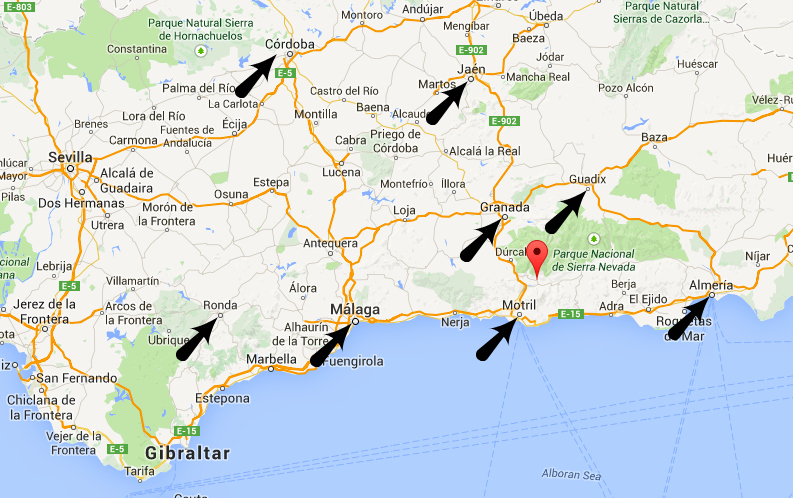
Granada
"Place of dreams, where the Lord put the seed of music in my soul"

The guitarist Andrés Segovia described Granada as a "place of dreams, where the Lord put the seed of music in my soul". It was first occupied by the Moors in 8th century, and its golden period came during the rule of the Nasrid dynasty from 1238 to 1492, when artisans, merchants, scholars and scientists all contributed to the city's international reputation as a centre for culture. Under Christian rule, following its fall to the Catholic Monarchs in 1492 and the expulsion of the Moors, the city blossomed in Renaissance splendour.
The greatest artistic wealth of Granada is its Spanish-Muslim art — in particular, the compound of the Alhambra and the Generalife. The Generalife is a pleasure palace with attached romantic gardens, remarkable both for its location and layout, as well as for the diversity of its flowers, plants and fountains. The Alhambra is the architectural culmination of the works of Nasrid art that were undertaken in the 13th and 14th centuries, with most of the Alhambra having been built at the time of Yusuf I and Mohammed V, between 1333 and 1354.
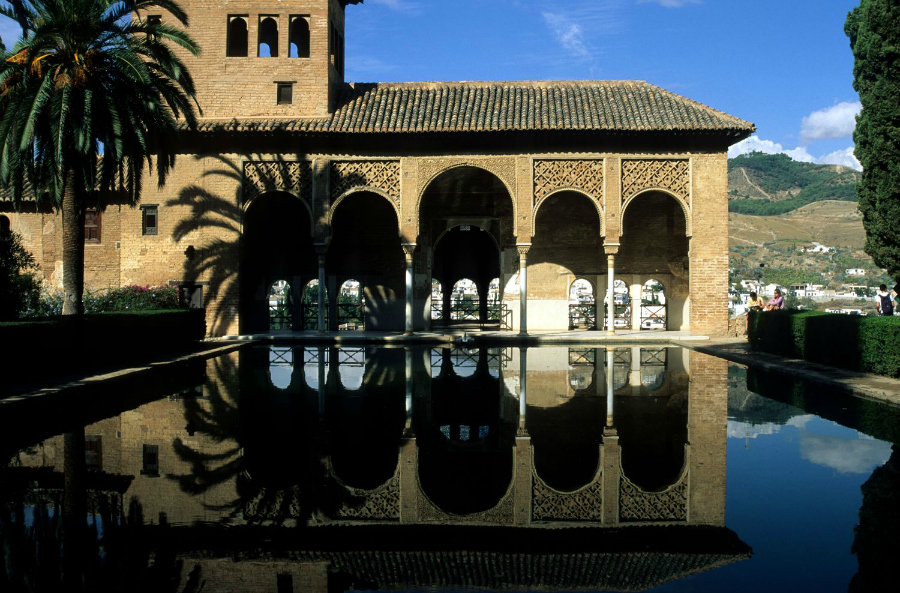
At present, the buildings of Granada are typically bourgeois in appearance, with much of the architecture dating from the 19th Century, together with numerous Renaissance and Baroque buildings.
The cathedral of Granada is built over the Nasrid Great Mosque of Granada, in the center of the city. Its construction began during the Spanish Renaissance in the early 16th century, shortly after the conquest of Granada by the Catholic Monarchs. Numerous grand buildings were built in the reign of Charles V, Holy Roman Emperor, so that the cathedral is contemporary to the Christian palace of the Alhambra, the University and the Real Chancillería (supreme court).
The Albayzín (or Albaicín) is a neighbourhood of Al-Andalus origin, much visited by tourists who flock to the city because of its historical associations, architecture, and landscape.
The archeological findings in the area show that it has been inhabited since ancient times. It became more relevant with the arrival of the Zirid dynasty, in 1013, when it was surrounded by defensive walls. It is one of the ancient centers of Granada, like the Alhambra, the Realejo and the Arrabal de Bib-Rambla, in the flat part of the city. Its current extension runs from the walls of the Alcazaba to the cerro of San Miguel and on the other hand, from the Puerta de Guadix to the Alcazaba.
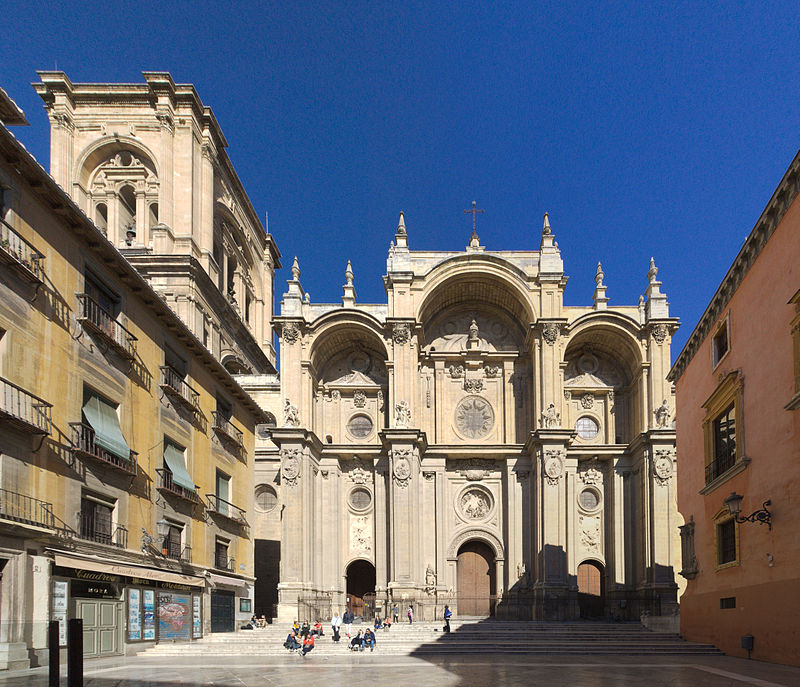
This neighborhood had its greatest development in the Nasrid era, and therefore largely maintains the urban fabric of this period, with narrow streets arranged in an intricate network that extends from the upper area, called San Nicolás, to the river Darro and Calle Elvira, located in Plaza Nueva. The traditional type of housing is the Carmen granadino, consisting of a free house surrounded by a high wall that separates it from the street and includes a small orchard or garden.
In 1994 the Albayzín was declared a Unesco World Heritage Site. Of its architectural wealth among others include the Ziri walls of the Alcazaba Cadima, the Nasrid walls, the towers of the Alcazaba, the churches of El Salvador (former main mosque), San Cristóbal, San Miguel Alto and the Real Chancillería.
The Sacromonte neighbourhood is located on the Valparaíso hill, one of several hills that make up Granada. This neighbourhood is known as the old neighbourhood of the Romani, who settled in Granada after the conquest of the city. It is one of the most picturesque neighbourhoods, full of whitewashed caves cut into the rock and used as residences. The sound of strumming guitars may still be heard there in the performance of flamenco cantes and "quejíos", so that over time it has become one of the most popular tourist attractions in Granada.
At the top of this hill is the Abbey of Sacromonte and the College of Sacromonte, founded in the 17th century by the then Archbishop of Granada Pedro de Castro. The Abbey of Sacromonte was built to monitor and guard the alleged relics of the evangelists of Baetica. Those are of questionable authenticity, but since their finding the area has been a religious pilgrimage destination.
The abbey complex consists of the Catacombs, The Abbey (17th-18th centuries), the Colegio Viejo de San Dionisio Areopagita (17th century) and the Colegio Nuevo (19th century). The interior of the church is simple and small but has numerous excellent works of art, which accentuate the size and rich carving of the Crucificado de Risueño, an object of devotion for the gypsy people, who sing and dance in the procession of Holy Week.

The name Granada is ancient and mysterious. It may mean "great castle", for the Roman fortress which once stood on the Albaicin Hill. When the Moors came here, the town was largely inhabited by Jews, for which they called it Garnat-al-Yahud - Granada of the Jews. The Jews are said to have been one of the first peoples to settle in Spain, even before the Romans.
Málaga
The second largest city in Andalucia and one of the oldest in the world

The southernmost large city in Europe, Málaga enjoys a subtropical Mediterranean climate. It has one of the warmest winters in Europe, with average temperatures of 17 °C (62.6 °F) during the day and 7–8 °C (45–46 °F) at night in the period from December through February. The summer season lasts about eight months, from April to November, although in the remaining four months temperatures sometimes reach around 20 °C (68.0 °F).
Málaga's history spans about 2,800 years, making it one of the oldest cities in the world. It was founded by the Phoenicians as Malaka about 770 BC, and from the 6th century BC was under the hegemony of Ancient Carthage. Then from 218 BC it was ruled by the Roman Republic and later the Roman Empire as Malaca (Latin). After the fall of the empire it was under Islamic domination as Mālaqah (مالقة) for 800 years, but in 1487 it again came under Christian rule in the Reconquista. The archaeological remains and monuments from the Phoenician, Roman, Arabic and Christian eras make the historic center of the city an "open museum", displaying its rich history of more than 3,000 years.
This important cultural infrastructure and the rich artistic heritage have culminated in the nomination of Málaga as a candidate for the 2016 European Capital of Culture.
The old historic centre of Málaga reaches the harbour to the south and is surrounded by mountains to the north, the Montes de Málaga, lying in the southern base of the Axarquía hills, and two rivers, the Guadalmedina – the historic center is located on its left bank – and the Guadalhorce, which flows west of the city into the Mediterranean.

The oldest architectural remains in the city are the walls of the Phoenician city, which are visible in the cellar of the Museo Picasso Málaga.
The Roman theatre of Málaga, which dates from the 1st century BC, was rediscovered in 1951. This can be seen at the entrance to the Alcazaba.
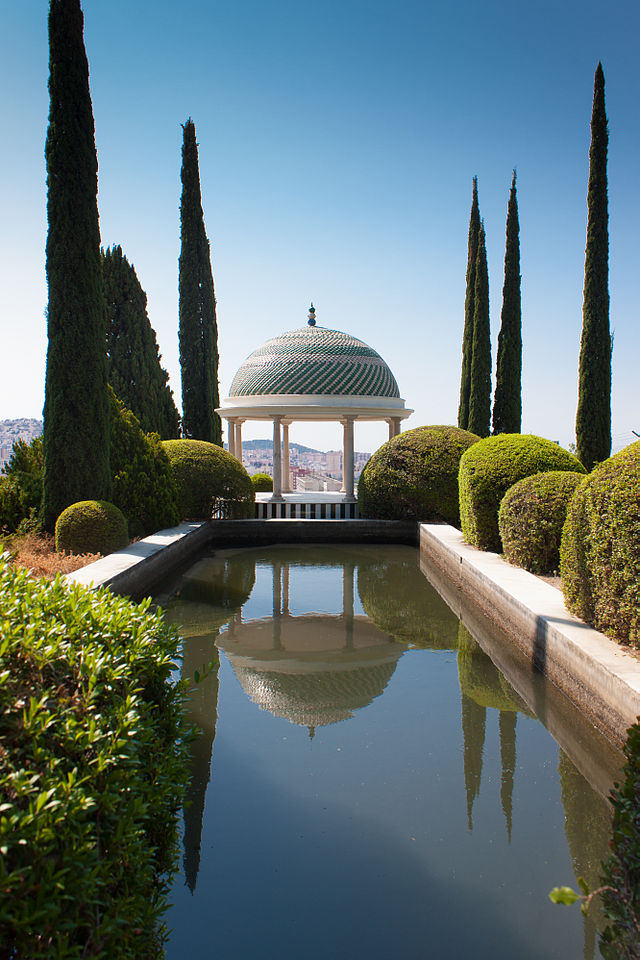
The cathedral was begun in 1528 and is a bizarre mix of styles. The half-built second tower, abandoned in 1765 when funds ran out, gave the cathedral its nickname: La Manquita (the "one-armed one").
Málaga's covered market is a seafood paradise but also offers a variety of other produce. Mercado Central de Atarazanas is situated on the site of the old Moslem “Atarazanas” (boatyard). Dating back to the 14th century, the site has probably always been utilised for trading. At one end of the market is the most amazing stained glass window depicting images of Málaga.
The Moors left posterity the dominating presence of the Castle of Gibralfaro, which is connected to the Alcazaba, the lower fortress and royal residence. Both were built during the Taifa period (11th century) and extended during the Nasrid period (13th and 14th centuries). The Alcazaba stands on a hill within the city. Originally, it defended the city from the incursions of pirates. Later, in the 11th century, it was completely rebuilt by the Hammudid dynasty. Occupying the eastern hillside that rises from the sea and overlooks the city, the Alcazaba was surrounded by palms and pine trees.
Like many of the military fortifications that were constructed in Islamic Spain, the Alcazaba of Málaga featured a quadrangular plan. It was protected by an outer and inner wall, both supported by rectangular towers, between which a covered walkway led up the slope to the Gibralfaro. Due to its rough and awkward hillside topography, corridors throughout the site provided a means of communications for administrative and defensive operations, also affording privacy to the palatial residential quarters.
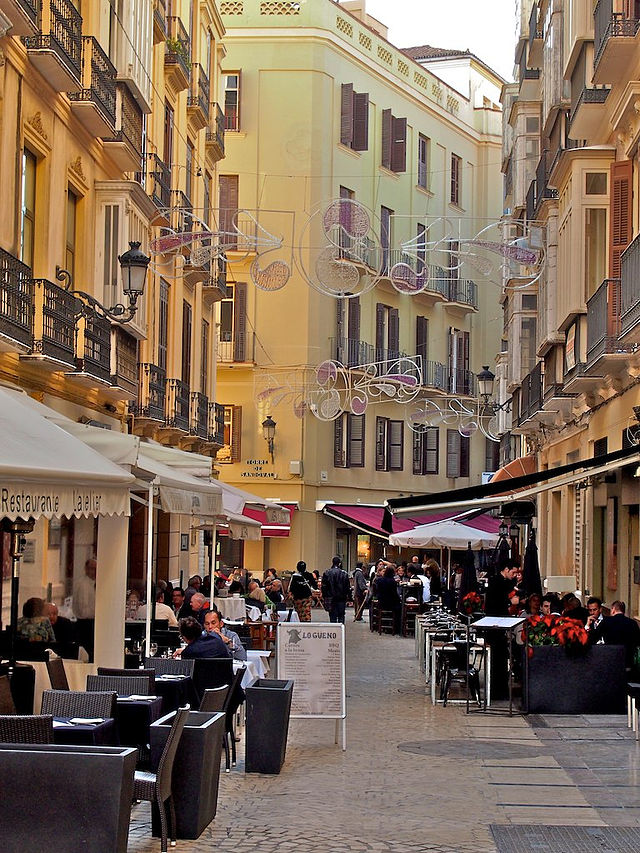
Jaén
"Very Noble and very Loyal City of Jaen, Guard and Defense of the Kingdoms of Castile"

Jaén is the capital of the province of Jaén. The name is derived from the Arabic word khayyān ('crossroads of caravans').
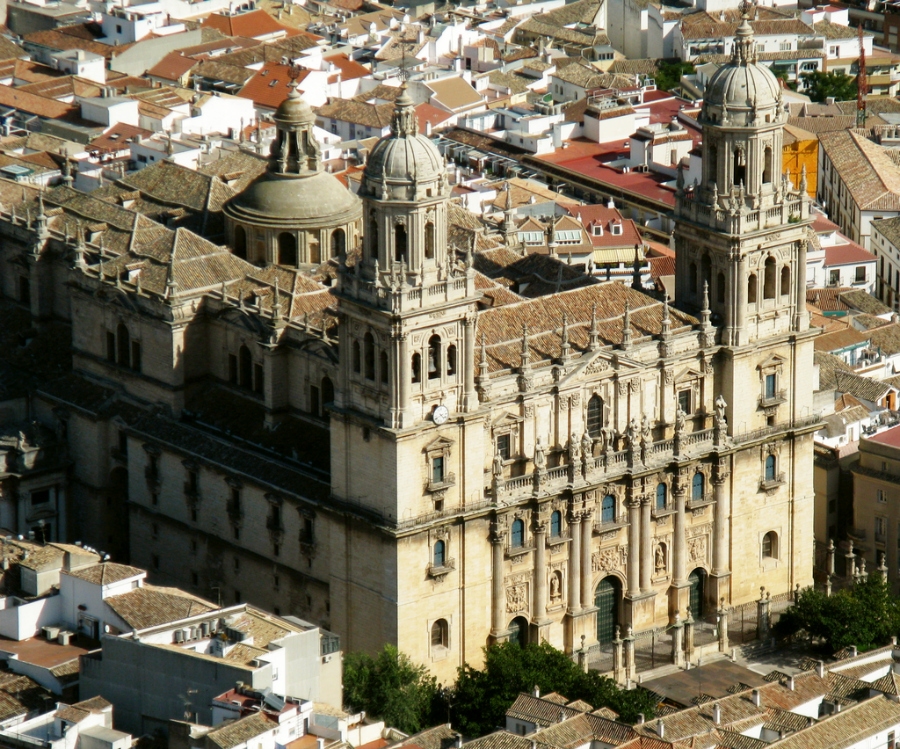
The inhabitants of the city are known as Jiennenses. Its population is 116,731 (2012), about one-sixth of the population of the province. Recently Jaén has had a great increase in cultural tourism. The city is also known as the World Capital of Olive Oil, because it is the biggest producer of the oil, known by locals as liquid gold.
The layout of Jaén is determined by its position in the hills of the Santa Catalina mountains, with steep, narrow streets, in the historical central city district. The city of Jaén is the administrative and industrial centre for the province. Industrial establishments in the city include chemical works, tanneries, distilleries, cookie factories, and textile factories. On 1 April 1938, during the Spanish Civil War, the city was bombed by the Nazis.
The motto of the city is: "Muy Noble y muy Leal Ciudad de Jaén, Guarda y Defendimiento de los Reynos de Castilla", ("Very Noble and very Loyal City of Jaen, Guard and Defense of the Kingdoms of Castile"). This title was given by king Henry II of Castile to the city of Jaen, due to the privileges that the city had, and to the role that the city was playing in the defense of the kingdom of Castile against the Moors.
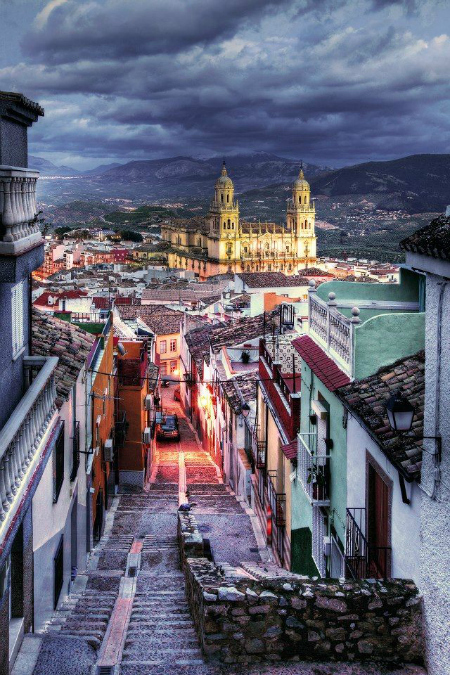
The gastronomy of Jaén is very varied, emphasizing local dishes such as the pipirrana (tomato, green peppers, breadcrumbs, garlic shoots, olive oil, vinegar, salt and hard-boiled egg); "spinach a la Jaén" (garlic, croutons, spiced sausage, bayleaf, egg, orange zest and vinegar); "rice a la Jaén" (very weak), "veal with chopped garlic", "trout from the rivers of Jaén" (trout, butter, chunks of ham with bacon, parsley, white wine and salt), "ajo blanco a la Jaén" (raw almond, olive oil, eggs, garlic, salt, vinegar and water).
Among the most well-known confectioneries of Jaén is "rice pudding", "gachas of Jaén" (a sort of porridge), "pestiños", "gusanillos" and "ochíos".

In Jaén the eating of tapas is very common; numerous bars exist where, for the price of a beer (around €1.50), one can purchase a tapa, which consists of a small plate of food for one person.
Almería
The driest city in Europe with a hot subtropical arid climate

Almería was founded by Calipha Abd-al-Rahman III of Córdoba who founded the Alcazaba (Moorish castle), which gave this city its name: Al-Mari'yah (the Watchtower). The Alcazaba is the second largest among the Muslim fortresses of Andalucia, after the Alhambra in Granada. It was to be a principal harbour in his extensive domain to strengthen his Mediterranean defences.
In this period, the port city of Almería reached its historical peak. After the fragmentation of the Caliphate of Córdoba, Almería continued to be ruled by powerful local Muslim Taifa emirs like Jairan, the first independent Emir of Almería and Cartagena, and Almotacin, the poet emir. Both Jairan and Almotacin were fearless warriors, but also sophisticated patrons of the arts. A silk industry, based upon plantings of mulberry trees in the hot, dry landscape of the province, supported Almería in the 11th century and made its strategic harbour an even more valuable asset.
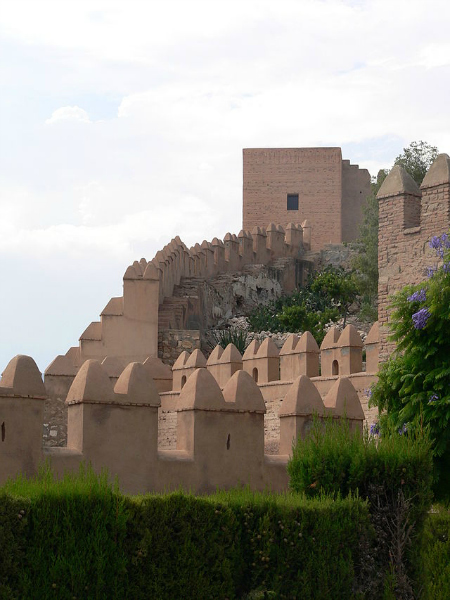
Contested by the emirs of Granada and Valencia, Almería experienced many sieges, including one especially fierce siege when Christians, called to the Second Crusade by Pope Eugene III, were also encouraged to attack the Muslim 'infidels' on a more familiar coast. On that occasion Alfonso VII, at the head of mixed forces of Catalans, Genoese, Pisans and Franks, led a crusade against the rich city, and Almería was occupied in October 1147.

Within a decade, however, Almería had passed to the control of the puritanical Muslim Almoravid emirs, and not until the late 15th century did it fall permanently into Christian hands. The city surrendered to the Catholic Monarchs, Fernando and Isabel, on 26 December 1489.
The 16th century was for Almería a century of natural and human catastrophes; for there were at least four earthquakes, of which the one in 1522 was especially violent, devastating the city. The people who had remained Muslim were expelled from Almería after the War of Las Alpujarras in 1568 and scattered across Spain. Landings and attacks by Berber pirates were also frequent in the 16th century, and continued until the early 18th century. At that time, huge iron mines were discovered and French and British companies set up business in the area, bringing renewed prosperity and returning Almería to a position of relative importance within Spain.
During the Spanish Civil War the city was shelled by the German Navy, with news reaching the London and Parisian press about the "criminal bombardment of Almería by German planes". Almería surrendered in 1939, being the last Andalusian capital city to fall to Francoist forces.
In the second half of the 20th century, Almería witnessed spectacular economic growth due to tourism and intensive agriculture, with crops grown year-round in massive invernaderos – plastic-covered "greenhouses" – for intensive vegetable production. The economy of Almería continues to be mostly based on agriculture, located mainly in the western part of the region. Numerous (a gross understatement) greenhouses produce tonnes of fruit and vegetables, more than 70% of their product being exported to the rest of Europe.
After Franco's death and popular approval of the new Spanish Constitution, the people of southern Spain were called on to approve an autonomous status for the region in a referendum. While the referendum was approved with 118,186 votes for and 11,092 votes against in Almería province, an absolute majority of all 279,300 registered electors was needed, and the result in Almería was just 42%. The Government impugned the result, and Almería remained part of the present autonomous region of Andalucia.
Almería has a beautiful beach with an amazing promenade that runs due east from the port for about 3 kilometres.
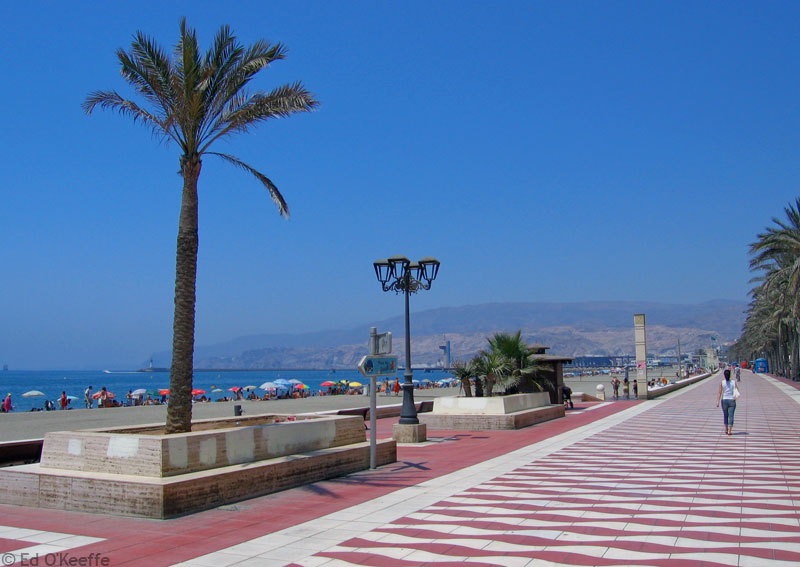
Almería has a hot subtropical arid climate and it is the driest city in Europe. The only area in Europe with this climate is the coastline around Almeria, from approximately Almerimar to the west, to Carboneras to the east. Almería has hot summers and mild winters; it has one of the sunniest, warmest and driest climates in Europe. It experiences the warmest winters of any European city.
Almería enjoys about 3000 hours of sunshine annually with over 320 sunny days a year on average. The city has an average of only 26 days of rain annually.
Córdoba
"The ornament of the world"

Córdoba was founded by the Romans in 169 BC, and over the course of time became the capital of Al-Andalus, Spain’s historical moniker derived from Moorish times. In its prime, Córdoba was the largest of all European cities and a cultural and educational center considered a commanding western hub.
Today, Córdoba hovers around tenth place in size of all Spain’s cities but the atmosphere reveals a more intimate feel with a steady focus on the historical core dominated by the glorious Mezquita, also called the Great Mosque of Córdoba.
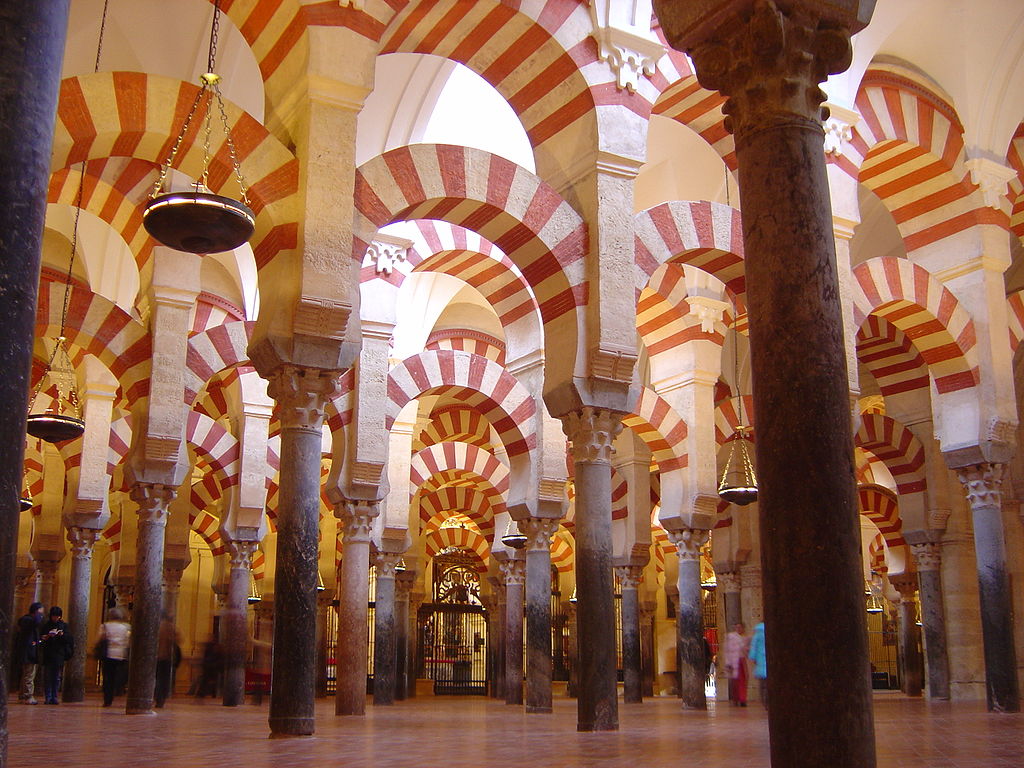
Dating back to the late 700s, the Mezquita was created by the Muslims. Once a region belonging to Baghdad, Córdoba sought independence in 929 AD and an entirely new domain was secured. Less than a century later, a great disorder disrupted the streamlined society and chaos reigned over the entire kingdom. With abounding strife materialising for such a long period, the city was easily overruled by Fernando III of Castile in the early 1200s. During the fourteenth century, the Mezquita was made into a cathedral and today it is an active house of worship and a beautiful place to visit.
It has been estimated that in the 10th century Córdoba was the most populous city in the world. Under the rule of Caliph Al Hakam II Córdoba became a centre for education. Al Hakam II opened many libraries on top of the many medical schools and universities which existed at this time. Such universities contributed towards developments in mathematics and astronomy. During these centuries Córdoba had become the intellectual centre of Europe and was also noted for its predominantly Muslim society that was tolerant toward its minorities.
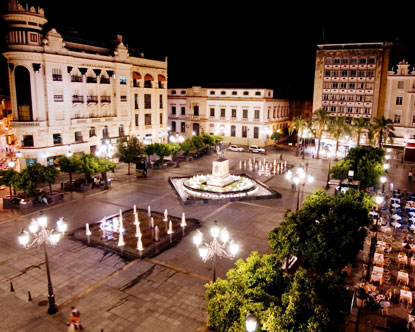
Plaza de la Corredera is a distinct component of Córdoba. The square brandishes the town hall, which was fortified over an old Roman installment, a temple which is continuously restored and maintained by the city. A Roman amphitheater once occupied nearby Plaza Corredera as did a bullring, and Córdoba's most unsavory characters, and today is a significant center akin to the Plaza Mayor in Madrid. The square now hosts plenty of important events such as New Year’s Eve celebrations.
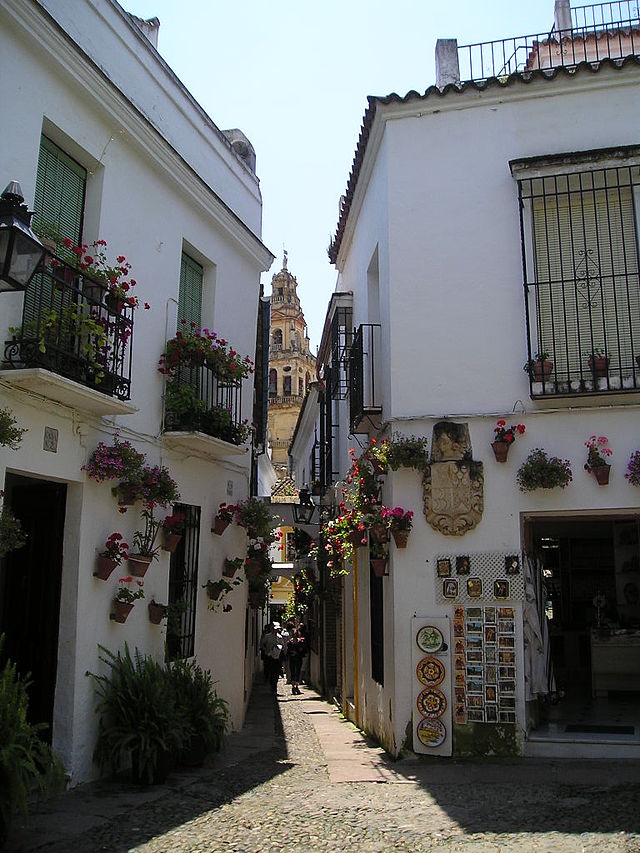
The fame of Córdoba penetrated even distant Germany: the Saxon nun Hroswitha, famous in the last half of the 10th century for her Latin poems and dramas, called it the Ornament of the World.
Motril
"Very Noble and Loyal"

Endless sunshine, panoramic mountain and sea views, and an odd-yet-functional blend of urban and rural … Motril is a comfortable city with abundant natural beauty. It is one of southern Spain’s most beautiful but under appreciated holiday destinations.
Situated on Spain’s Costa Tropical, Motril and the surrounding region claim an extensive history from the Neolithic period to the Phoenician times to the Roman Empire. The city saw most of its development, though, under Arab rule and was given the name Mu-Tra-Yil. It remained a significant defensive area until the late fifteenth century when it was overtaken by the Catholic kings and subsequently renamed Motril.
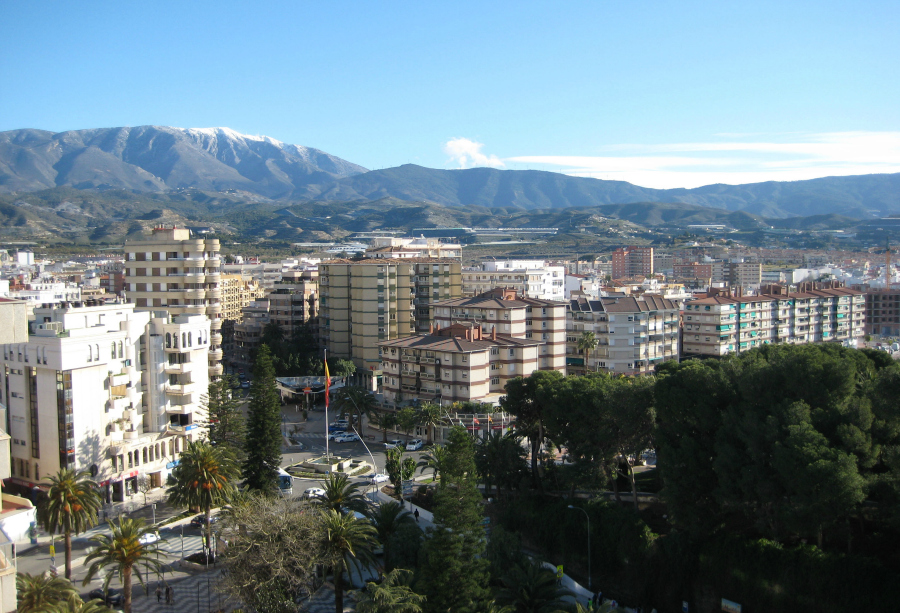
Unfortunately, much of Motril’s architectural history was lost when the city’s mosque was demolished and the Moors expelled. Powerful earthquakes in the late nineteenth century also completely leveled the city.
By the nineteenth century, agriculture and fishing characterized Motril. Seven factories operated in the city producing sugar, honey, and rum. While the sugar industry is no longer a thriving industry in the area, the towers of the old factories still contribute to Motril’s skyline.
In 1657, Philip IV granted Motril the title of city, separating its jurisdiction from Granada. At the beginning of the next century, Philip V distinguished Motril as “Muy Noble y Leal” (“very Noble and Loyal”), which is now found on Motril’s shield.
In addition to Motril’s fascinating history, natural beauty abounds in the hills north of the city and in the beaches to the south.
The Paseo de las Explanadas and the neighbouring Parque de los Pueblos de America are two favourite sites in Motril to spend some time. The Paseo embodies quintessential Southern Spain and the Parque is a peaceful, beautiful sanctuary in the midst of a big city.
The gentle waters of the Mediterranean bathe the coast of Granada. The subtropical climate of the coast and its calm, warm waters, make it an ideal place for all kinds of water sports. Diving enthusiasts can enjoy one of the most beautiful sea floors of the Andalusian coastline.
Motril offers a variety of beaches that stretch for 20km from Salobreña to Castell de Ferro, allowing tourists an incredible choice of small secluded coves and spacious sandy shoreline on which to relax. The region’s most popular beaches include Poniente, Granada, Torrenueva, Joya, Carchuna and Calahonda Beach, each with its only unique attractions, such as beach-side restaurants, cafes and water sports equipment for hire.

Motril’s coastal strip has two beaches Playa Granada and Playa Poniente; the latter is busier and offers more facilities. However, Playa Granada is quieter and more attractive. Along the coastline there are many smaller sheltered coves and inlets.
There are also three nude beaches: Cantarriján and El Muerto are close to Almuñécar and La Joya is near Motril.
The old town of Motril is littered with historic structures and intriguing monuments, which stand as a testament to the region’s fascinating history as a bustling Mediterranean port. One of the most significant civil buildings in the area is the Motril Town Hall, which dates back to 1631 and was constructed by master builder Isidro de la Chica. Nearby, the imposing castle of Carchuna is open to visitors interested in the town’s long and diverse history. Built in 1777, on the orders of Charles III, the castle was designed to protect the coastline against attacks from pirates. Also, erected at around the same time to defend the region against further pirate attacks is the Farillo of Calahonda, a historic lookout tower. Motril’s long and fascinating heritage is reflected in the wide range of wonderful monuments located across the centre of town and beyond.

The pretty marina is where you will find water sports facilities and boat excursions; you can even take a day trip to Morocco.
The region is also home to several marvellous parks and areas of natural beauty, such as the Gardens of Cases de los Bates. This magnificent park incorporates several smaller gardens, covering around 20,000 square metres, linked together by steps and footpaths. These individual gardens contain a splendid mix of stunning architecture, beautiful flora and fauna as well as spectacular views out over the coastline. Other parks and gardens in the area include the Charca de Suarez and the Pueblos de America Park.
Guadix
The Roman City of Action

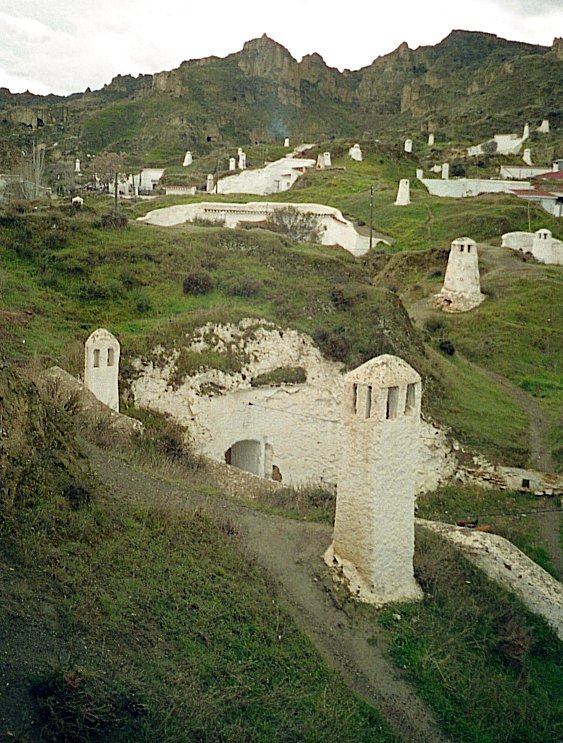
You can drive through the cave area, but you should also get out and take a stroll. The "troglodytes” are very friendly people and are also very house-proud, or "cave-proud", as you wish. If you show an interest in their homes, you will be sure to be invited in to have a look. Ever since the Moorish times, the Andalucians have been fond of living underground because it is the best way of escaping the summer heat waves.
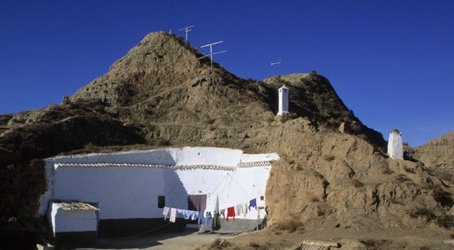
Most of today's cave-dwellings are well-appointed, like any other Spanish home, and some are even quite luxurious, with marble floors, fitted kitchens and internet connections. Purullena, a nearby village, has a disco inside a cave. Also in this village, the hand-crafted earthenware for which the region is famous, is sold on the roadside.
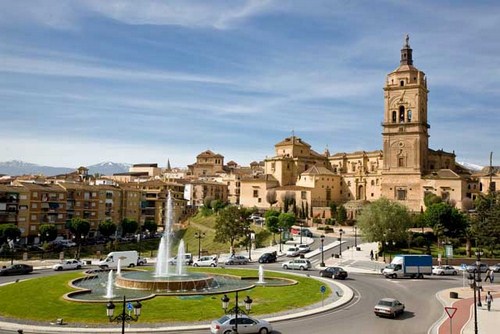
In the centre of Guadix, you should not miss the Cathedral, founded in 1594, and the Cave Museum - Plaza de la Ermita Nueva S/n.
Guadix is proud to be the home town of writer Pedro Antonio de Alarcón, in the English-speaking world Pedro is best known for the novel, El sombrero de tres picos (The Three-Cornered Hat), a text that tells the story of a miller, his attractive wife and the local magistrate who has designs on her. The three-cornered hat in question represents ‘power' to those who wear it - a power that is satirised by the author. There is a statue of Pedro in the main square.
The desert landscape around the village of Benalúa de Guadix is especially impressive, and well worth a drive through the region. If you wish to explore this fascinating region more thoroughly, you can also drive from Benalúa de Guadix to the Spa called "Baños de las Alicun de las Torres" returning on the first road on the right after leaving the spa, which will take you back to the A92/N342 motorway. The total drive takes between 90 minutes and 2 hours.
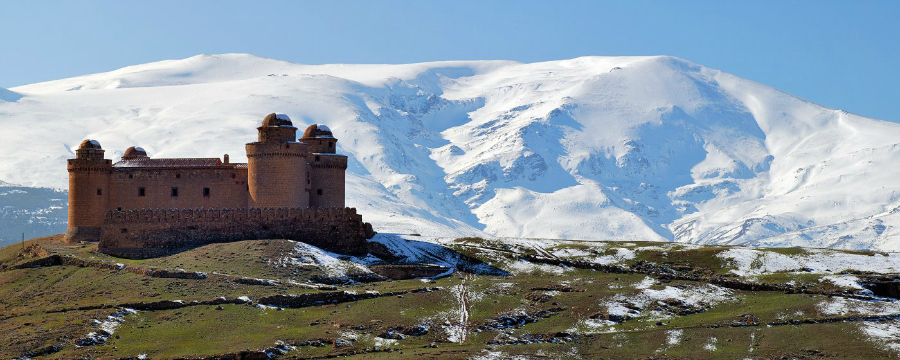
When in Guadix, don't miss the fascinating Castle of the Calahorra in the village of La Calahorra, just a few miles to the East. This impressive fort was awarded to a Christian knight for his role in the Reconquest, and fitted by him with a gracious Renaissance courtyard made of Italian marble and by Florentine craftsmen. To get there, leave Guadix in the direction of Almería on N324. You will soon be treated to the spectacular view of the round towers of the castle framed against the towering Sierra Nevada, which so often features in photographs and posters. To visit the castle you must ask in the village where the caretaker, or "guarda del castillo" lives, and drive him up with you for the visit.
Ronda
The deep El Tajo gorge that carries the rio Guadalevín through its heart

Perched on an inland plateau, Ronda is Málaga Province’s most spectacular town. It has a superbly dramatic location and owes its name (‘surrounded’ by mountains) to the encircling Serranía de Ronda.
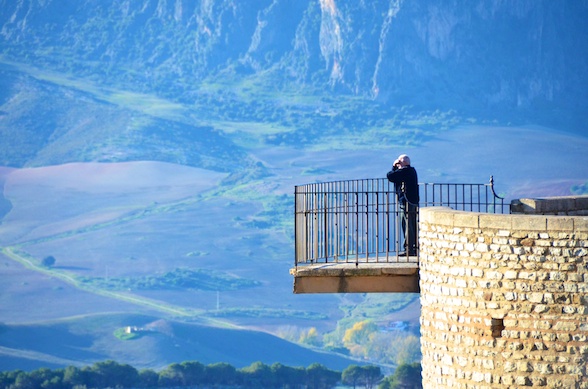
Despite being Andalucía's fastest-growing town - it overtook Córdoba in the big three Andaluz tourist attractions, behind Sevilla and Granada, in the early 21st century - Ronda retains much of its historic charm, particularly its old town. It is famous worldwide for its dramatic escarpments and views, and for the deep El Tajo gorge that carries the rio Guadalevín through its centre. Visitors make a beeline for the 18th century Puente Nuevo 'new' bridge finished in 1793, which straddles the 100m chasm below, for its unparalleled views out over the Serranía de Ronda mountains.

A 'must do' is to walk to the bottom of the gorge where you'll get the best photo shots. But if there is an extended dry spell, the gorge can stink because they still release sewage into the river -- you have been warned.
Ronda is also famous as the birthplace of modern bullfighting, today glimpsed once a year at the spectacular Feria Goyesca. Held at the beginning of September, here fighters and some of the audience dress in the manner of Goya's sketches of life in the region.
Legendary Rondeño bullfighter Pedro Romero broke away from the prevailing Jerez 'school' of horseback bullfighting in the 18th century to found a style of bullfighting in which matadores stood their ground against the bull on foot. In 2006 royalty and movie stars were helicoptered in for the Goyesca's 50th anniversary celebrations in its small bullring, while thousands jammed the streets and parks outside.
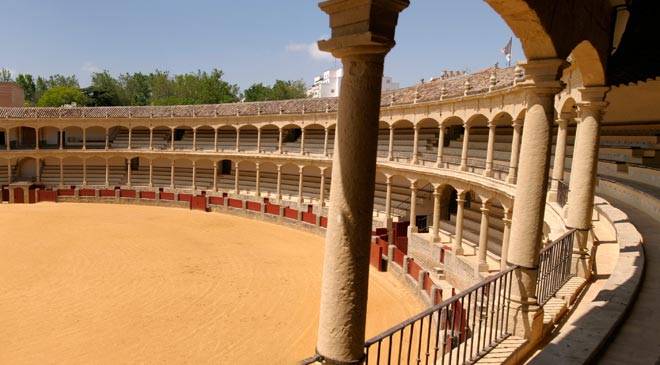
Otherwise the bullring, Plaza de Toros, the oldest and one of the most highly regarded of Spain's bullrings is now a museum, and visitors can stroll out into the arena. You can visit the museum inside for €6.
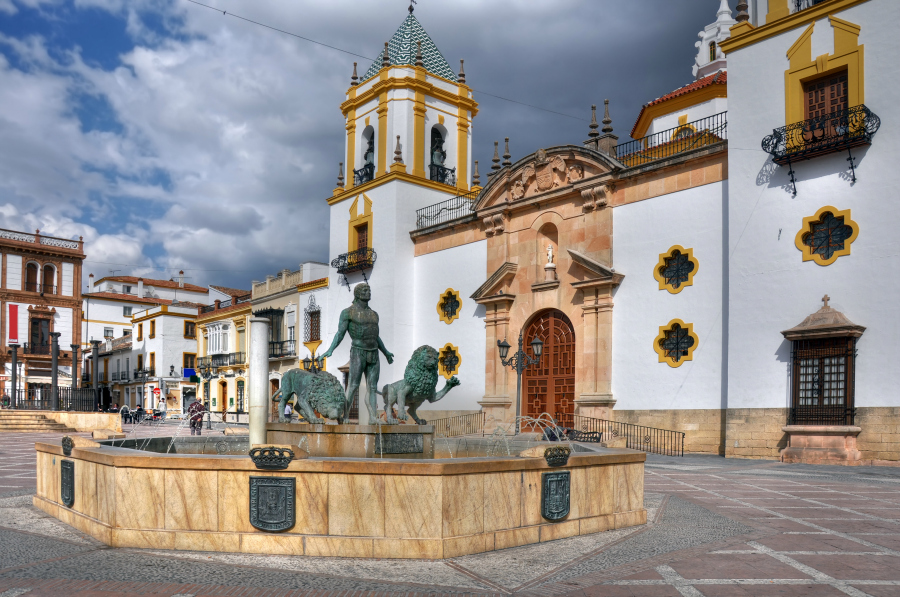
Ronda also holds a lovely 'romería' pilgrimage each year. This is in honour of the Virgen de la Cabeza and is organised by the local Catholic brotherhood of the same name. For those wishing to see the lighter side of life in Ronda this is a wonderful way to participate in a local tradition that dates back to the beginning of the 20th century.
Across the bridge, where an elegant cloistered 16th century convent is now an art museum, old Ronda, La Ciudad, sidewinds off into cobbled streets hemmed by handsome town mansions, some still occupied by Ronda's titled families.
The Casa de Don Bosco is one such, its interior patio long ago roofed in glass against Ronda's harsh winters. Its small, almost folly-like gardens lose out, however, to the true star, a few minutes' walk to the furthest end of the Ciudad, the Palacio Mondragón. Clumsily modernised in parts during the 1960s, this still has working vestiges of the exquisite miniature water gardens dating from its time as a Moorish palace during Ronda's brief reign as a minor Caliphate under Córdoba in the 12th century.
The cobbled alley to the Mondragón leads naturally on to Ronda's loveliest public space, the leafy Plaza Duquesa de Parcent, which boasts a convent, two churches, including the toytown belltower of the iglesia Santa Maria de Mayor, and the handsome arched ayuntamiento (council) building.
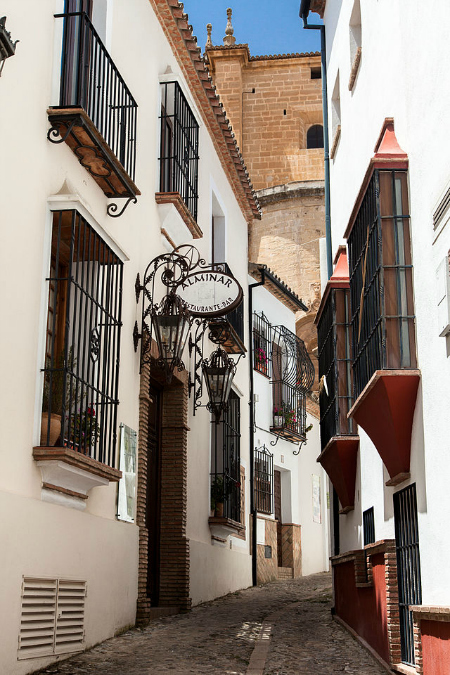
Nearby calle Armiñan leads down to the spacious plaza of the traditional workers' barrio, San Francisco, with excellent bars and restaurants. Back from the Mondragón, the Plaza del Campillo overlooks steps that zigzag down to a dramatic eye-level through the Puente Nuevo. The town's pedestrianised 'high street', calle Espinel, opposite the bullring, is nicknamed 'La Bola' and is where Rondeños go for virtually everything.